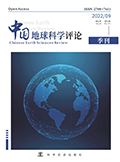

地热能是一种可再生清洁能源, 在能源大家庭中具有独特显著的优势, 有效开发利用地热资源, 对助力实现“双碳” 战略目标具有重大意义。西藏自治区拥有十分丰富、高品质的地热资源, 是国内少数适宜规模化发展地热发电、集中供暖和梯级综合利用的地区。本文系统分析了西藏地区大地热流特征, 认为西藏具有寻找高温地热资源的巨大前景, 是地热勘探的重要方向。并详细阐述了西藏地热资源的分布特征、资源潜力及目前开发利用状况, 提出了推动我区地热资源高质量发展的意见及建议。
Geothermal energy is a kind of renewable and clean energy. It has unique and significant advantages in the energy family. The effective development and utilization of geothermal resources is of great significance to help achieve the strategic goal of “double carbon” . The Tibet Autonomous Region has abundant and high-quality geothermal resources, and is one of the few areas in China suitable for large-scale development of geothermal power generation, central heating and cascade comprehensive utilization. This paper systematically analyzes the characteristics of geothermal heat flow in Tibet, and concludes that Tibet has great prospects for finding high-temperature geothermal resources and is an important direction for geothermal exploration. It also elaborates on the distribution characteristics, resource potential and current development and utilization of geothermal resources in Tibet, and puts forward opinions and suggestions for promoting the high-quality development of geothermal resources in the region.